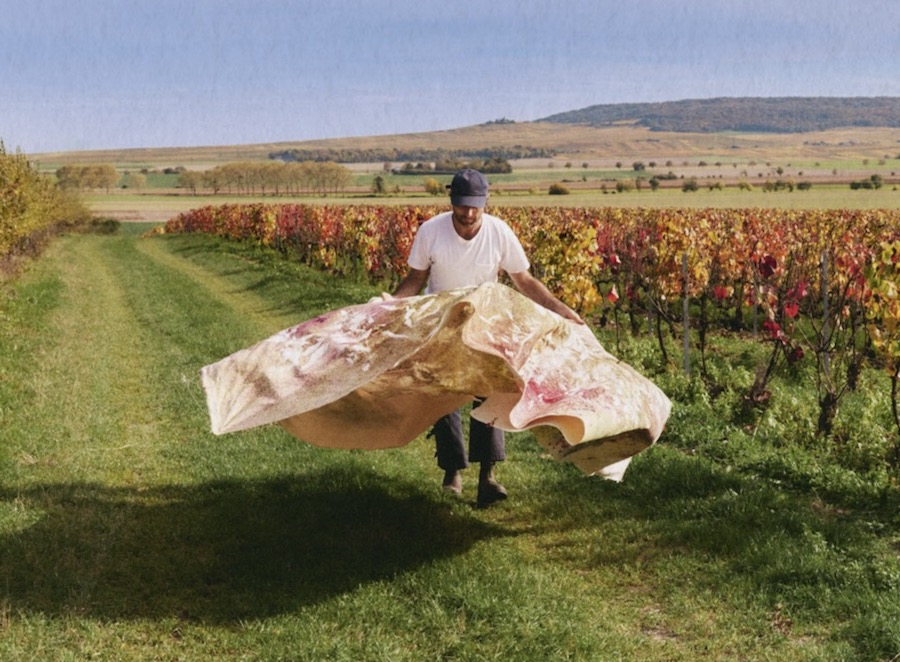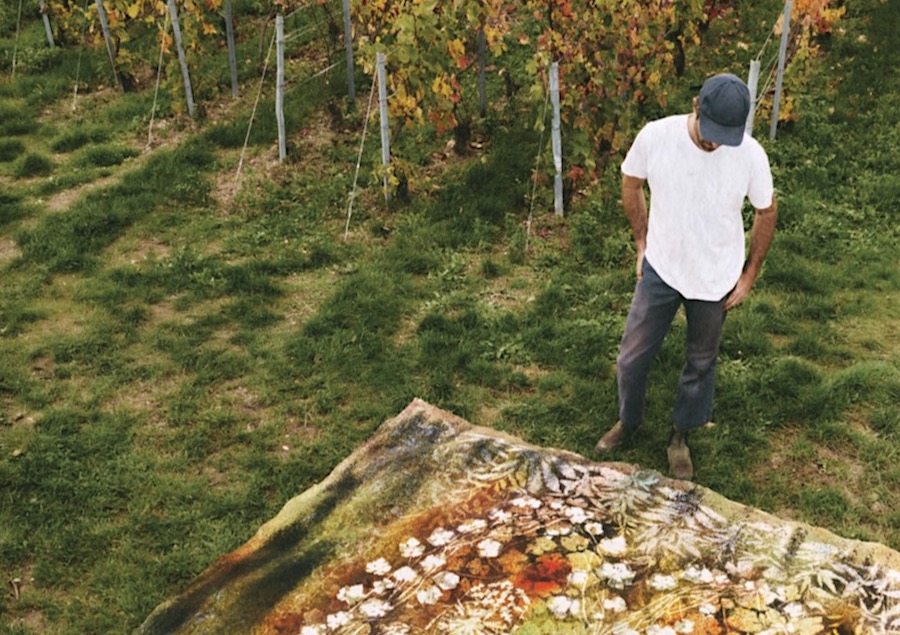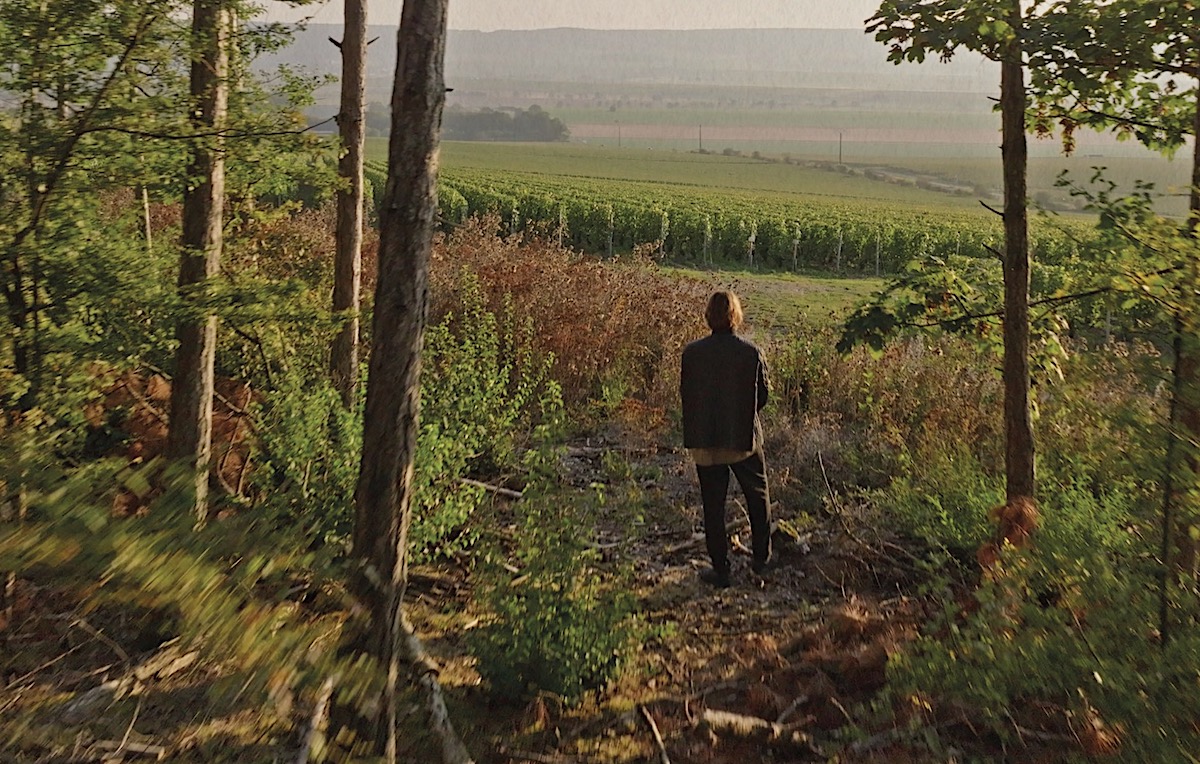Ruinart’s long-running Conversations with Nature series returns this week with a new commission from American artist Sam Falls, presented at Frieze London 2025 (15–19 October). For almost three centuries, the world’s oldest champagne house has cultivated a dialogue with its environment.
Its vineyards in Reims are not only sites of production but ecosystems — places where the Maison’s commitment to biodiversity and sustainability quietly shapes the rhythm of its work. The Conversations series extends that ethos into the cultural sphere, inviting artists to interpret this ongoing exchange between humanity and the natural world.
Falls’ contribution marks a particularly resonant chapter. Known for works made in direct collaboration with the elements — rain, sunlight, mist — Falls brings a tactile, time-based sensibility to Ruinart’s ecological narrative. His process is as much observation as it is creation: placing plant matter, pigments and linen out in the open to let nature itself dictate the image. The resulting surfaces, bleached or saturated by weather, stand somewhere between painting, photography and sculpture. They are, as Falls describes, “botanical portraits” — impressions of place rather than representations.

Created on site in Ruinart’s historic Taissy vineyard, the new works blend flora from the estate with species reintroduced to restore biodiversity. Pigments were thrown and left to react to the Champagne region’s humidity, while leaves, branches and petals pressed their shapes into the canvas. The final composition, with its oblong motifs and arched structure, nods to the stained glass of Reims Cathedral and the vaulted chalk cellars beneath Ruinart’s headquarters. The piece is both a landscape and an architecture of memory—a meditation on the fragile yet enduring links between human craft and the natural order.
Born in Vermont in 1984 and now based in California, Falls began his practice through photography before transitioning to what he calls a “camera-less” approach to working. Early experiments using sunlight to bleach found objects onto dyed fabric gradually evolved into paintings made with rainwater, weather-reactive pigments and organic materials gathered locally. Each work unfolds through exposure — not in the photographic sense of shutter speed, but in the literal act of leaving a surface open to its surroundings.

Falls’ work often blurs distinctions between image and idea, a deliberate resistance to art-historical categories. “What defines a painting?” he asks. The question feels pertinent at a time when environmental art risks slipping into didacticism. Falls sidesteps that trap by treating nature not as subject matter but as collaborator. His process allows for uncertainty — pigments may drift, water may wash them away, leaves may decay — but it’s precisely in that vulnerability that the work’s meaning resides.
For Ruinart, this collaboration continues a lineage of artist partnerships including Jeppe Hein, David Shrigley and Eva Jospin, each reinterpreting the Maison’s relationship with nature. Falls’ approach, rooted in process and impermanence, aligns closely with the brand’s ecological priorities. The vineyard is not merely a backdrop but an active participant in the work’s making.

